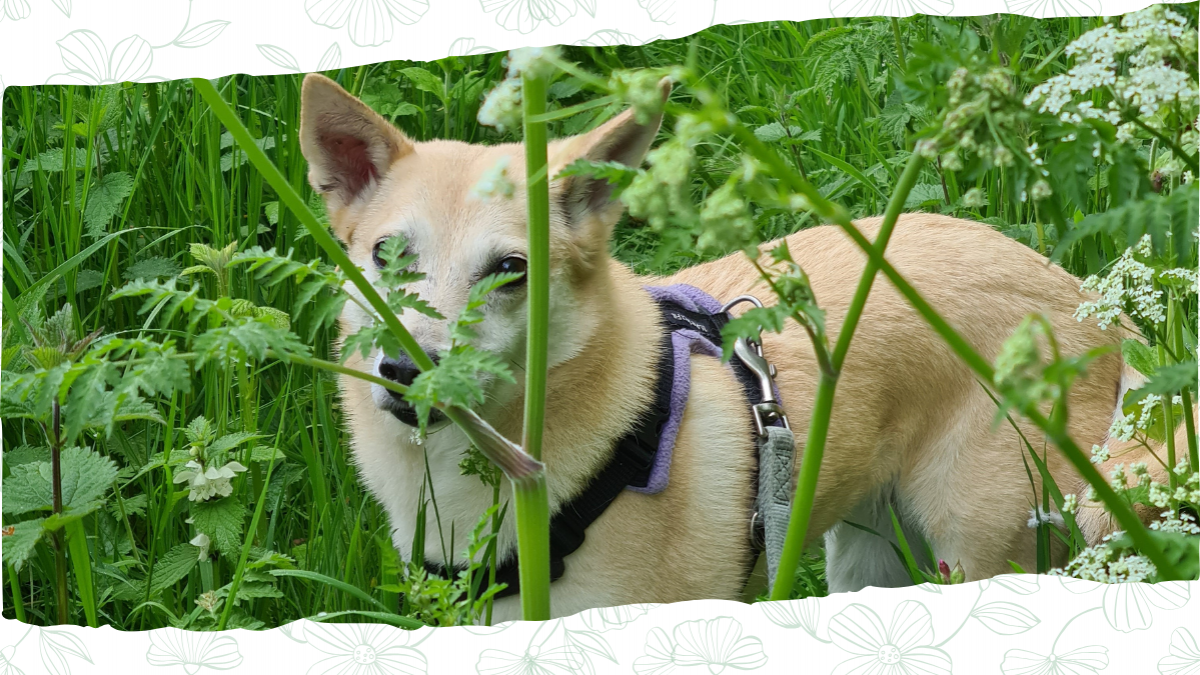Cultivating Canine Behaviour: Why Training is Like Gardening

Discover why dog training is like gardening: nurturing growth, addressing problems at the root causes, and promoting behavioural diversity. 🌱
Spring has sprung in the UK! The past few sunny days have been filled with the rustling, banging and buzzing of my neighbours getting to work in their gardens. Although I'm maybe not quite as productive as they are, I have big gardening plans for 2024 and have started to put some elbow grease into rejuvenating my swampy, mossy back garden. (Attractive I know, but the squirrels, robins, blackbirds and pigeons seem to love it).
It has made me think (because unfortunately my brain box is never quiet) how gardening is a perfect analogy for how we should be raising dogs. Both pursuits require patience, dedication, and a keen understanding of the delicate balance between nurturing growth and managing challenges. So, let's dig into how training your pup is akin to tending a flourishing garden:
- Nutrition, Activity, and Care:
The foundation of a healthy garden lies in providing appropriate water, sunlight, and regular maintenance. Similarly, a dog's behavioural health hinges on various factors provided by their guardian such as good nutrition, diverse activities, love and social belonging within their family. Just as a well-fed and nurtured plant thrives, a dog provided with proper care and attention is more likely to be a healthy and content member of your family.
- Regular Maintenance: A garden requires ongoing care to thrive and, likewise, a dog guardian should be observant and attentive toward their dog. Training is not a one-time task; it is an ongoing process that requires regular practise and adjustments through the different life stages of your dog. When left unattended, a garden will grow wild and overgrown with weeds, which will require considerable effort to remove. Likewise, your dogs need constant attention and guidance so they can be successful in our human-centric world, or they may resort to using their unique dog skills which may be unacceptable to you and your lifestyle. Like pulling weeds and pruning plants to maintain order in the garden, reinforcing desired behaviours and habits, and addressing unwanted ones before they take root is a continuous effort when living with dogs.
- Punishment vs. Weed Killer: We've all been there (or at least I hope it is not just me): Life has been busy, and suddenly weeds have taken root absolutely everywhere! And the thought of having to pluck and dig out any more of those unwanted plants has made us want to throw in the towel and give up entirely. So, perhaps like me, you resorted to using weed killer, only to find out that it is disgusting, expensive, and to top it all off, the bloody weeds reappeared a few weeks down the line.
Using punishment in dog training is a lot like using weed killer. You may think it is worth it, because it may offer a momentary reprieve by suppressing undesirable behaviour, much like how weed killer kills weeds. (Well, at least the visible portion of the weed, but not the root! More on that below.). However, it is not a sustainable solution and will have unintended consequences. Punishment may backfire by creating fear, anxiety or aggression in dogs, leading to long-term behavioural issues, and it may also accidentally suppress wanted behaviours, much like how weed killer can harm beneficial plants and soil health. In addition, punishing is not even guaranteed to work, so I really recommend you avoid it at all cost. - Addressing the Root Cause:
The passionate gardener will know that to truly rid a garden of weeds, one must tackle the roots. Similarly, when dealing with unwanted dog behaviours, addressing the underlying motivations behind behaviour is the key to success. Rather than simply suppressing unwanted behaviours with punishment, the welfare-minded guardian will focus on the root cause with the help of a qualified and accredited trainer or behaviourist. This may include identifying unmet needs, an unsuitable environment or emotional dysregulation, and addressing these to suit the individual dog through a training or behaviour modification programme to resolve the undesired behaviours.
- Promoting Diversity: The expert gardener knows that it is not sufficient to simply tackle the roots of weeds. No, the secret to cultivating a vibrant and healthy garden is to fill it with a variety of plants suited to its conditions. If we are aiming to achieve lasting behavioural change, we need to promote behavioural diversity in our dogs. This means giving our dogs a variety of appropriate, safe, enjoyable and desirable behaviours to engage in on a regular basis.
A dog that has enjoyed a calm sniffy walk and perhaps some scentwork, has access to preferred toys, chews and cardboard to munch on and shred, and has a lovely sunny, comfortable spot to rest in is more likely to relax while you are working from home for hours. This is what we mean by enrichment by the way! Just as a diverse garden ecosystem thrives and does not leave room for weeds to grow, a dog encouraged to engage in a variety of behaviours suited to its temperament, environment and individual preferences is more likely to lead a fulfilling life full of delightful and colourful behaviours without unwanted behaviours creeping up.
In conclusion, living with your dog is much like tending a garden. Both require dedication, patience, and an understanding of the delicate balance between nurturing and managing. By being an observant guardian, who provides consistent care and a stimulating and varying lifestyle to their dog, and who recognises and addresses the root causes of behaviours before they are fully formed habits, you can cultivate the life and behaviours of your thriving, content and behaviourally healthy furry best friend. So, grab your metaphorical gardening gloves and embark on the journey of cultivating canine behaviour.
 Ingenious Dogs
Ingenious Dogs 